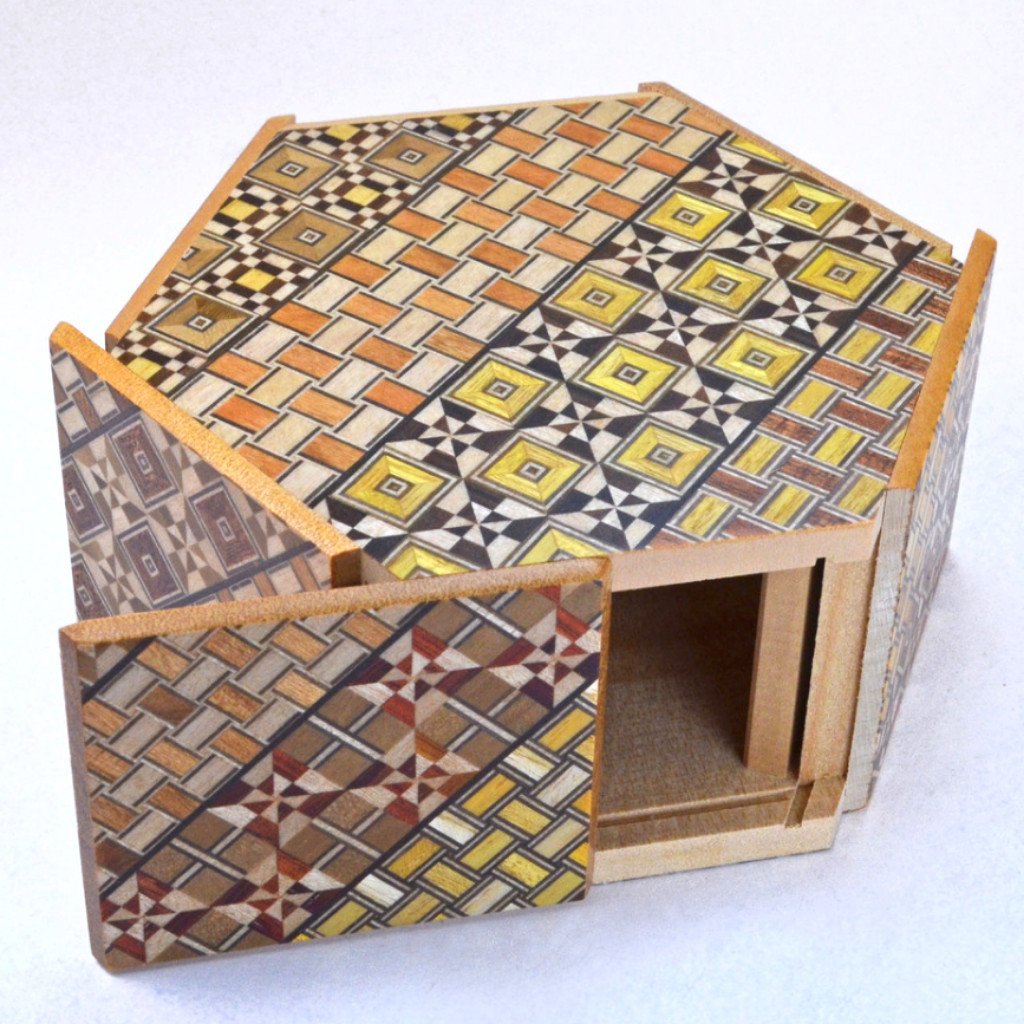I enjoy indulging in YouTube in my free time, where I came across several puzzle box videos. I took an interest mainly in Japanese puzzle boxes, because I enjoyed the overshadowed precision behind every box. As I delved deeper into the history of the puzzle box, I noticed that form the very first puzzle boxes that originated from japan in the early 1800’s; to protect tools for the everyday worker, to the appearances in England Victoria in the 19th century; mainly for entertainment purposes, that all the puzzle boxes consisted of flat faces. As I did more research I learned that one of the first known puzzle boxes that did not consist of flat sides was Da Vinci’s Cryptex. Although I enjoyed the shape of the Cryptex, I wondered if I could create a cylinder puzzle box that could work as a jewelry box and stand on its own. I wanted the innovative shape of the cylinder, but I found myself wanting to use movable rings and to use a visual solution instead of symbols to incorporate the early Japanese style.
What I wanted for my puzzle box was to function as a jewelry box, with a simple and minimalist design while still being visually pleasing. I leaned towards a smaller project, as I personally find them more aesthetically pleasing and that’s what led me to make a handheld puzzle box. I want my puzzle box to use simple materials, specifically wood, and materials that are easily accessible, helping to manage the price and accessibility for anyone to make this puzzle box. These materials will also enforce the aesthetic I’m working towards. My puzzle box should lock and unlock two drawers where the inside should be secure. Only with the knowledge of the solution should the puzzle box be opened, keeping the valuables safe. My puzzle box should allow the owner relatively quick and easy access to the valuables inside, while still being complex enough to keep out every other person besides the creator and or owner.
Featured Image:

